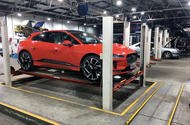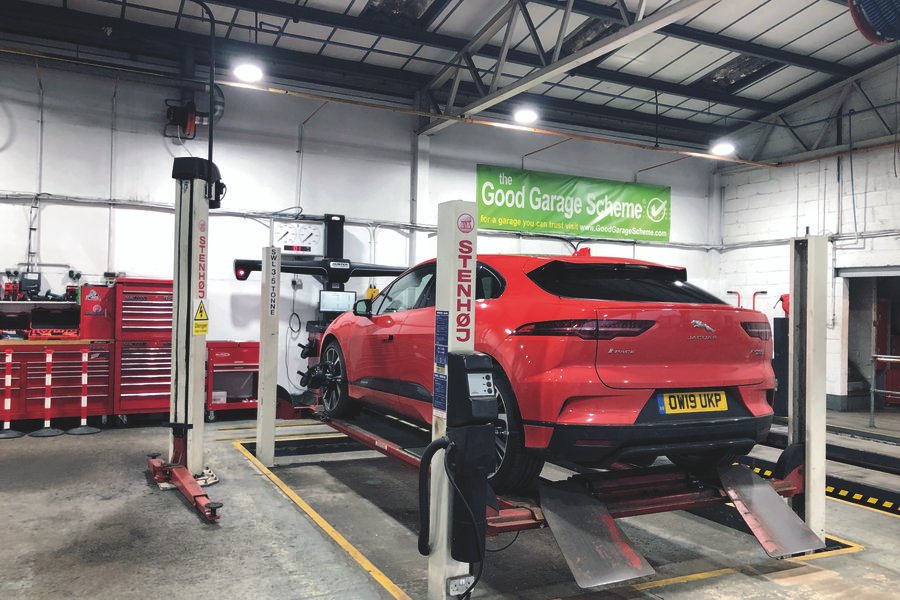
Servicing electric vehicles requires vital changes in the workplace. We look at what companies need to do
As electric vehicles become more common on our roads and as we move towards a 2030 ban on pure combustion engines, it’s not just car owners who need to be aware of the changing landscape. automobile.
Garages and workshops are also looking to be able to repair and maintain electric vehicles. If there is to be a huge shift towards electric cars, dealerships – whether large retail groups or small independent traders – will need to be aware of how to maintain them.
One thing is certain: the companies that maintain our cars will need to prepare for the electric revolution now. Here’s how they can start to modernize their workplaces.
Capacity Building
A capacity check is the first step. If a business is looking to accommodate more EVs, it’s important to make sure the wiring and infrastructure are in place.
Companies can ask a local electrician to ensure that there is sufficient capacity on site above maximum demand. It is usually either very inexpensive or even free to undertake. Alternatively, there are companies that can perform a site survey to produce a turnkey solution. The power supply must not have diversity (a power supply calculation) in order to have sufficient power to recharge the cars.
If a site turns out to have an insufficient supply, there are a few options to consider. It may be necessary to block power to electric vehicle charging points, in which case a charging point provider may install a charging point where electricity is confined before being routed to the existing distribution board. Alternatively, a less powerful charging point that requires less energy can be installed.
When a business has low power supply capacity, it may need to invest in upgrading its incoming power supply to achieve the best charging result. One option is to seek advice from the Distribution System Operator (GD) for a supply upgrade. The price for this type of upgrade ranges from minimal to quite expensive, depending on how much work the DNO has to do to get the additional supply into the property. Hopefully the power cable on the street will pass through the building, which means minimal infrastructure work.
Garages who are worried about major substation upgrades need not worry, as these would generally not be needed for a standard commercial installation. Not only is this an expensive business, requiring major network upgrades, they are also usually not the responsibility of the business owner.
Charging management is another potential solution to ensure businesses are ready to switch to electric vehicles, allowing chargers to use only up to a maximum level of power to avoid power outages.

Make plans
The installation of charging points is the next step, for the use of the company itself and possibly the general public as well. There is a potential additional revenue stream, as car owners are likely to seek out companies that provide electric vehicle charging points.
Workshop owners should seek to install basic charging points in each bay so that electric vehicles can charge during the repair. They should also consider a transfer bay, but here it is better to have a faster charging station, up to the maximum allowed by the building, to return the vehicle to the customer with enough power to at least take it home. him.
With 50 kW charging points (fast chargers), 100 Aph per unit would generally be required. Upgrading the existing supply to support one should be considered, unless there is already enough juice on site.
For external terminals – for customer car parks for example – certain types of charging zones can provide many additional advantages. Some businesses make the most of the outdoor space by using a charging station as a parking meter, generating additional revenue, or have the ability to customize the screens of these stations to display promotional material.
Invest in training
We are likely to find that although electric vehicles present initial infrastructure challenges, they generally have fewer maintenance requirements than the majority of fossil fuel vehicles. But that doesn’t mean the end of maintenance, as the value for electric vehicle owners is more likely to be found in workshops better able to perform diagnostics on electric vehicles, to ensure proper operation. of the vehicle. As a result, training will be key – something the Institute of the Automotive Industry has repeatedly called on the government to focus on as we move towards a zero-emission future.
Safety and equipment
Beyond recharging, workshops may need to make other changes to work on EVs. Insulated tools are of course essential, as well as rubber boots, a non-conductive “barge pole” and other equipment to isolate the vehicle and to ensure that unauthorized persons do not enter. The area.
While business owners assess the risks, it should be determined whether the lifting gear is suitable. Electric vehicles are much heavier than other types of cars, due to their heavy batteries and …
More about this article: Read More
Source: www.autocar.co.uk
This notice was published: 2021-09-05 23:01:22
